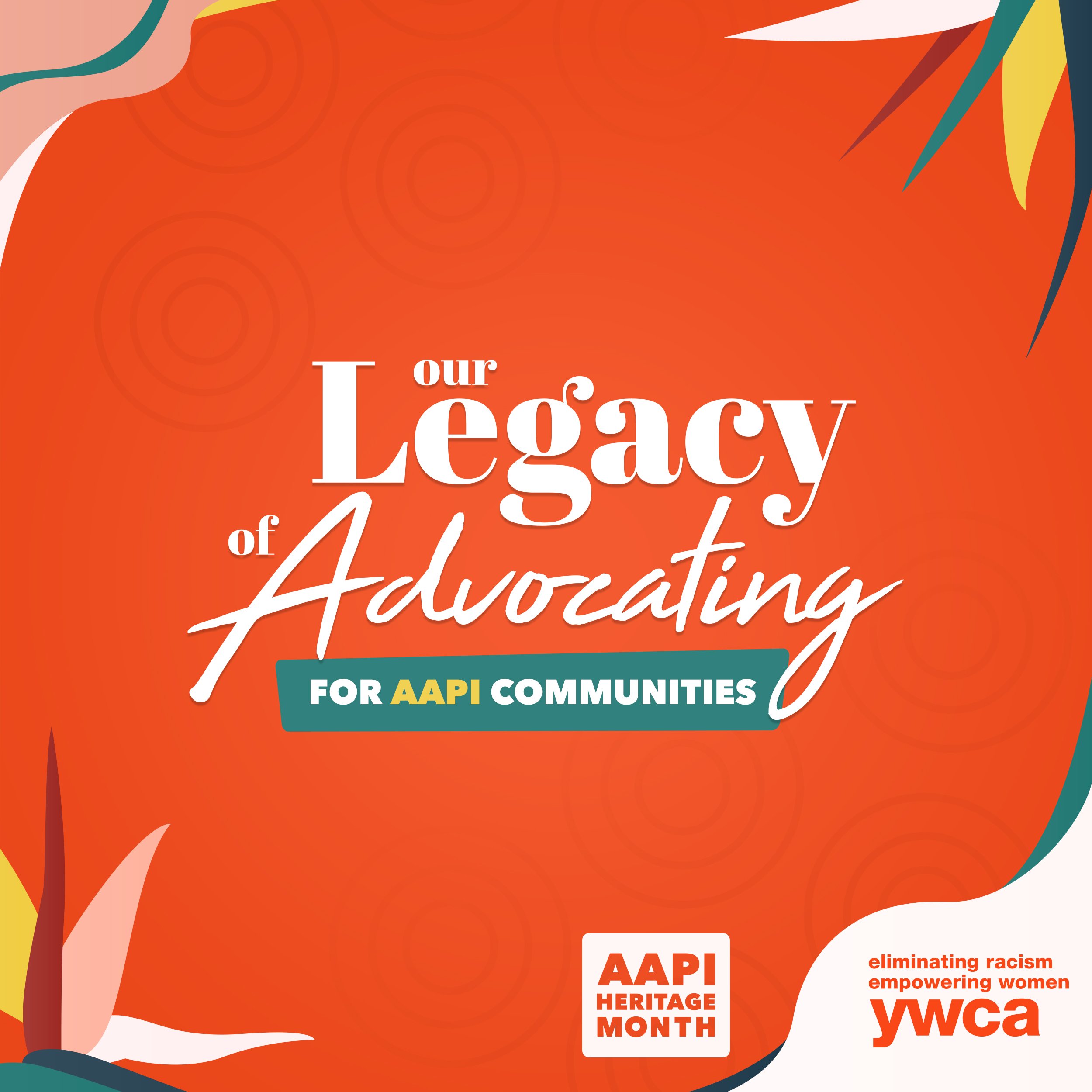Like Mother Like Daughter: A Second-Generation Experience in the YWCA Movement YWCA: A Progressive Voice for Racial Equality and a Cruel Reality of Forced Assimilation
Author: Roxanne Vigil  In the March 1947 edition of YWCA’s The Woman’s Press magazine, Mary Takeyama reflected on her work throughout her time in YWCA Los Angeles and later in the Colorado Relocation Center during World War II, writing, “I miss Y activities but am carrying on its ideas” (bit.ly/3LCaXq7). Takeyama had done much for the YWCA movement, most notably having worked to develop YWCA Girl Reserves in the Amache-Japanese Internment Camp in Granada, Colorado after Executive Order 9066 forced 120,000 Japanese Americans, including her and her family, into internment.At the time of her forced relocation into internment, Mary Takeyama had been a member of the Board of Directors of the Japanese Branch of the Los Angeles YWCA. During internment, she was a forerunner for developing YWCAs throughout her time in the Colorado Relocation Center, when those subjugated to the relocation looked for a sense of community. For Takeyama, YWCAs were the way to go, especially for the young girls who needed an education, activities, and a sense of belonging. Not only did she work as a schoolteacher, but she also acted as a role model for her 14-year-old daughter Joy Hashimoto, who herself would become a leader in the YWCA movement following internment. Joy stayed “from around the end of August 1942 to June of 1945,” her entire high school education in the Japanese Internment Camp in Granada, Colorado where she benefitted from Y activities (bit.ly/3nFAiWe). YWCAs were a critical community aspect of the internment camp lifestyle and young girl’s development, especially at Amache High School.YWCA was one of the leading organizations against the forced displacement of the Japanese on the western coast of the United States and was dedicated to helping those incarcerated in the federal relocation camps (bit.ly/3lWIvot). Though YWCA’s ideals to create a sense of community were successful within the internment camps, with such programs as Girl Reserves and clubs at the center of everyday life, the well-intentioned efforts inevitably saw backlash and unintended consequences. Yoosun Park, an Associate Professor at Smith College, argues that despite YWCA’s proactive voice for racial equality, the standardized approach to assimilate the Japanese away from their cultural roots hindered inclusivity within the camps. With a high Christian motive, those who practiced other faiths, such as Buddhism, didn’t feel welcome within the Christian-centric organization (bit.ly/3lWIvot).With a primary focus on youth, mostly second-generation Japanese Americans between the ages of 18-25 who had a greater grasp of the English language, YWCA’s focus on creating stability within the internment camps helped facilitate an easier transition for them once the war was over. Once resettlement started taking place, in May of 1945, Park notes, “the camps were difficult to leave not only because they offered security” but also because the [Japanese] were reluctant to leave behind the keen enjoyment experience through participation in group cultural and recreational activities at the center” (bit.ly/3lWIvot). Moreover, “many vulnerable segments of the population including the elderly, the non-English-speakers, single mothers, and others with questionable likelihood of finding sufficient employment, housing, and support outside did not want to…leave until the war was over,” (bit.ly/3lWIvot).Mary Takeyama and Joy Hashimoto, both YWCA leaders we celebrate today, were not immune to the challenges of resettlement after the war. However, because Joy Hashimoto was second generation and well-educated with a greater understanding of the English language, she was able to come out of internment with more opportunity, and she became a great leader within the YWCA movement as a result. As we celebrate Asian American and Pacific Islander Heritage Month, we are reminded that sometimes with great intentions come unintended consequences. Today we want to acknowledge great YWCA leaders who came before us while also contextualizing our history as we learn from it. This month, we look back on our involvement in the WWII Japanese internment camps and acknowledge our history that though we went in with great purpose for racial equality, our approach missed the mark when helping the broader Japanese society overcome obstacles.Park, Yoosun. “The Role of the YWCA in the World War II Internment of Japanese Americans: A Cautionary Tale for Social Work.” Social Service Review 87, no. 3 (September 2013): 477–524. https://doi.org/10.1086/671987.
In the March 1947 edition of YWCA’s The Woman’s Press magazine, Mary Takeyama reflected on her work throughout her time in YWCA Los Angeles and later in the Colorado Relocation Center during World War II, writing, “I miss Y activities but am carrying on its ideas” (bit.ly/3LCaXq7). Takeyama had done much for the YWCA movement, most notably having worked to develop YWCA Girl Reserves in the Amache-Japanese Internment Camp in Granada, Colorado after Executive Order 9066 forced 120,000 Japanese Americans, including her and her family, into internment.At the time of her forced relocation into internment, Mary Takeyama had been a member of the Board of Directors of the Japanese Branch of the Los Angeles YWCA. During internment, she was a forerunner for developing YWCAs throughout her time in the Colorado Relocation Center, when those subjugated to the relocation looked for a sense of community. For Takeyama, YWCAs were the way to go, especially for the young girls who needed an education, activities, and a sense of belonging. Not only did she work as a schoolteacher, but she also acted as a role model for her 14-year-old daughter Joy Hashimoto, who herself would become a leader in the YWCA movement following internment. Joy stayed “from around the end of August 1942 to June of 1945,” her entire high school education in the Japanese Internment Camp in Granada, Colorado where she benefitted from Y activities (bit.ly/3nFAiWe). YWCAs were a critical community aspect of the internment camp lifestyle and young girl’s development, especially at Amache High School.YWCA was one of the leading organizations against the forced displacement of the Japanese on the western coast of the United States and was dedicated to helping those incarcerated in the federal relocation camps (bit.ly/3lWIvot). Though YWCA’s ideals to create a sense of community were successful within the internment camps, with such programs as Girl Reserves and clubs at the center of everyday life, the well-intentioned efforts inevitably saw backlash and unintended consequences. Yoosun Park, an Associate Professor at Smith College, argues that despite YWCA’s proactive voice for racial equality, the standardized approach to assimilate the Japanese away from their cultural roots hindered inclusivity within the camps. With a high Christian motive, those who practiced other faiths, such as Buddhism, didn’t feel welcome within the Christian-centric organization (bit.ly/3lWIvot).With a primary focus on youth, mostly second-generation Japanese Americans between the ages of 18-25 who had a greater grasp of the English language, YWCA’s focus on creating stability within the internment camps helped facilitate an easier transition for them once the war was over. Once resettlement started taking place, in May of 1945, Park notes, “the camps were difficult to leave not only because they offered security” but also because the [Japanese] were reluctant to leave behind the keen enjoyment experience through participation in group cultural and recreational activities at the center” (bit.ly/3lWIvot). Moreover, “many vulnerable segments of the population including the elderly, the non-English-speakers, single mothers, and others with questionable likelihood of finding sufficient employment, housing, and support outside did not want to…leave until the war was over,” (bit.ly/3lWIvot).Mary Takeyama and Joy Hashimoto, both YWCA leaders we celebrate today, were not immune to the challenges of resettlement after the war. However, because Joy Hashimoto was second generation and well-educated with a greater understanding of the English language, she was able to come out of internment with more opportunity, and she became a great leader within the YWCA movement as a result. As we celebrate Asian American and Pacific Islander Heritage Month, we are reminded that sometimes with great intentions come unintended consequences. Today we want to acknowledge great YWCA leaders who came before us while also contextualizing our history as we learn from it. This month, we look back on our involvement in the WWII Japanese internment camps and acknowledge our history that though we went in with great purpose for racial equality, our approach missed the mark when helping the broader Japanese society overcome obstacles.Park, Yoosun. “The Role of the YWCA in the World War II Internment of Japanese Americans: A Cautionary Tale for Social Work.” Social Service Review 87, no. 3 (September 2013): 477–524. https://doi.org/10.1086/671987.
